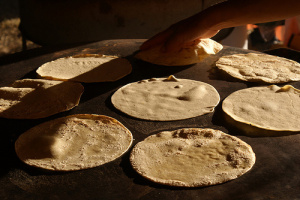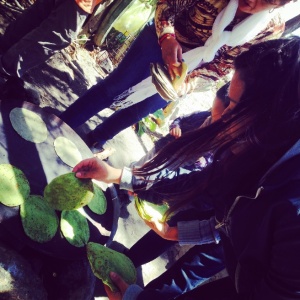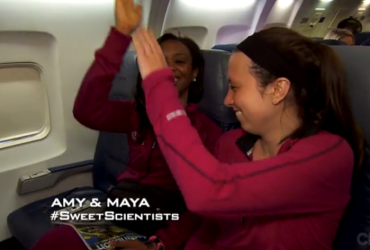By: Diana Maricruz Pérez Santos
We are unable to talk about Mexican food without tortillas and their derivatives (tacos, tostadas, nachos, etc.). This corn-based product, which may be controversial from a nutritional standpoint, has moved from an indigenous food product to a worldwide favorite thanks to its versatility. As #officialfoodgeeks we face the challenge of making tortillas on an industrial scale while preserving the original features of the traditional recipe. Here are the essential things to know about the tortilla making process.
Nixtamalization: the old school process

image credit: www.wordpress.com
Nixtamalization is the ancient process where corn kernels are heated in an alkaline solution of water and calcium oxide (lime) or “cal” (≈1-3%) to remove the outside layer, known as the pericarp. According to the traditional recipe, corn kernels should be kept in the alkaline solution overnight after heating. At the end of the standing time, the corn is drained washed two or three times with clean water. The waste water from this process is traditionally called “nejayote”. Corn kernels are then ground to form dough, which is molded into the characteristic form of tortillas. Finally, the dough is heated to obtain the tortillas, though it is worth mentioning that this dough is useful for various Mexican dishes.
From a chemical point of view, the gelatinization of maize starch is dependent on nixtamalization (see my post on starch gelatinization). The pericarp of the corn kernel is chemically damaged during cooking. This disruption of the kernel structure allows water, at the appropriate temperature for gelatinization, to interact with the starch in the kernel resulting in partial gelatinization. After the mixture is heated and left to rest overnight, the starch granules absorb additional moisture. The milling process allows more starch granules to interact with water, and their gelatinization provides the smooth texture of the tortilla dough.
Challenges for the food industry: nixtamalization and nutrition

Me making chard-fortified tortillas
Industrially, nixtamalization is facing two major problems: prolonged standing time after cooking and pollution caused by nejayote. Alternative technologies such as extrusion, low shear transport and ohmic heating are emerging as viable options to solve these problems.
In Mexico, the nutritional benefits of this staple product are questioned, due to the increasing prevalence of obesity in the Mexican population. Tortilla defenders (including myself) highlight the calcium content gained during nixtamalization and the fact that these products can be consumed by people with celiac disease, among other tortilla virtues. Currently there are a lot of developments in tortilla fortification which are now commercially available and have been met with good acceptance. An example of this are prickly pear cactus tortillas. However, the rheology of tortillas fortified with other ingredients is quite different than traditional tortillas, a factor not well received by consumers.
As you can see, tortillas are a current issue that can be studied in many different areas of food science- this was just a quick look at the current landscape. Tortilla chips are another big topic and I hope to write about them soon! If you are interested to learn more, leave your questions or suggestions in the comments below!
Cover image credit: www.macaroniandcheesecake.com






Leave a Reply